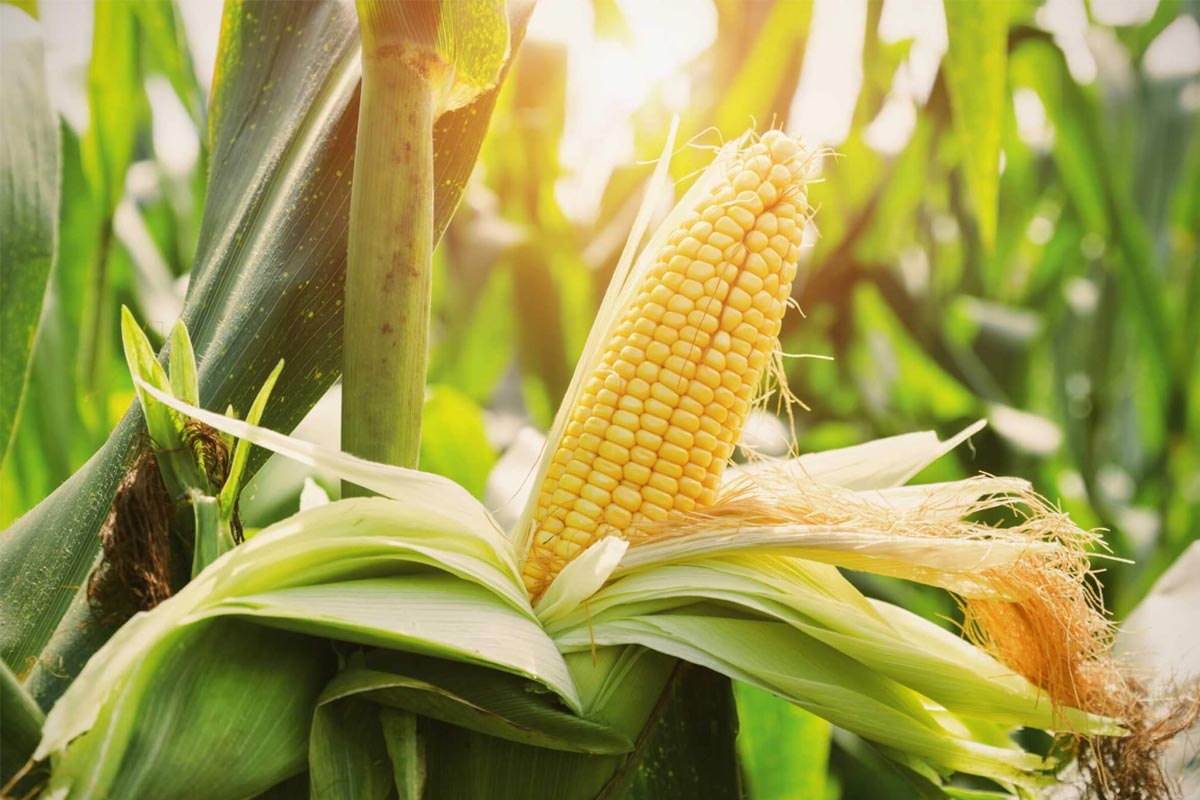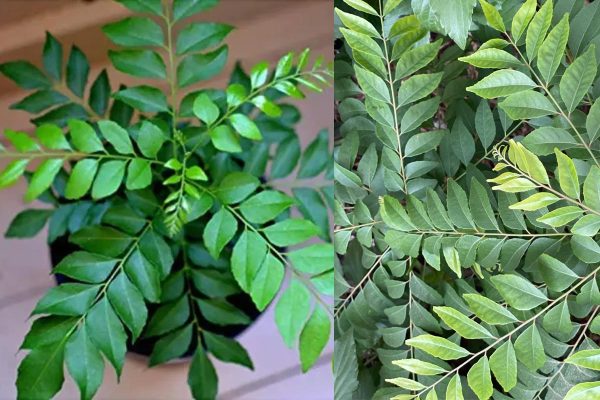Plants
Corn
Introduction / परिचय
The corn plant (Zea mays), an emblem of agriculture, boasts a storied legacy spanning millennia. Originating in Mesoamerica, corn revolutionized indigenous societies with its nutritional richness. Today, it's a global staple, celebrated for its versatility in cuisines and products. With its tall stalks and tassels, corn is a beacon of sustenance and economic significance. Its evolution from ancient crop to modern marvel exemplifies humanity's deep connection to the land and its bounty. As we explore the various strains of corn and their myriad uses, we unveil a plant that continues to shape cultures, economies, and nourishment.
Also Read This :Navratri Flowers: Symbolism and Importance
| English Name: | Corn |
| Hindi Name: | भुट्टा (Bhutta) |
| Scientific Name: | Zea mays |
| Family: | Poaceae |
| Kingdom: | Plantae |
| Light : | Full Sun |
| Height: | 4 to 10 feet (1.2 to 3.0 meters) |
| Flower Color : | - |
| Leaves Color : | Green |
| Eason Features : |
Also Read This :Greening Your Home: The Benefits of Indoor Plants
When to Plant Corn
The ideal time to plant corn (Zea mays) hinges on local climate and frost dates. Generally, corn thrives in warm soil, requiring temperatures around 60-95°F (15-35°C) for germination. Planting typically commences in spring, when soil warms and frost risk abates. Early-spring planting ensures optimal growth, while late-spring planting might suit cooler regions. Wait until the soil reaches a consistent temperature before planting in colder areas to prevent poor germination. For a continuous harvest, stagger plantings every 2-3 weeks. Corn's growth cycle spans 60-100 days, so choose the planting time that aligns with your region's weather patterns to ensure a successful and bountiful harvest.
Also Read This :Easy way to grow Strawberry at Home
Varieties / किस्मे
Corn (Zea mays) is a testament to the ingenuity of agricultural innovation and the profound impact of plant breeding. The evolution of corn has given rise to a captivating array of varieties, each with its unique attributes, cultural ties, and culinary applications. From the ancestral teosinte to the modern sweet corn, let's embark on a journey to explore the fascinating diversity of corn plants.
Dent Corn
Dent corn, also known as field corn, is a cornerstone of global agriculture. Recognisable by the indentation on each kernel's crown, it's primarily cultivated for animal feed, industrial purposes, and processed foods.
Sweet Corn
Sweet corn epitomises summer's bounty. Its tender kernels boast a delightful sweetness due to the high sugar content. Consumed fresh, canned, or frozen, sweet corn graces countless tables worldwide.
Popcorn
Popcorn's magical transformation from a hard kernel to a fluffy, edible delight has enchanted generations. Its unique moisture content causes the seeds to open when heated, making it a cherished snack.
Flint Corn
Distinguished by its hard outer shell, it is often used for ornamental purposes and traditional crafts. It features a range of vibrant colours and has historical significance in Native American cultures.
Flour Corn
It is prized for its soft starch content, making it ideal for grinding into cornmeal or flour. It is a staple in many culinary traditions, contributing to dishes like tortillas and polenta.
Waxy Corn
Waxy corn contains more amylopectin, giving it a distinct waxy texture when cooked. It's used in various food applications, including starch production and Asian cuisine.
Pod Corn
Pod corn is a visually intriguing variety with kernels encased in husks, resembling a cluster of miniature ears. Although not widely cultivated for consumption, it remains a botanical curiosity.
Teosinte
Teosinte, corn's wild ancestor, showcases the evolutionary journey of corn. Its small, tough kernels provide insight into the centuries-long domestication process that led to modern corn varieties.
Rainbow Corn
Rainbow corn, often heirloom varieties, displays vibrant colours. Beyond its visual appeal, it carries cultural significance, symbolising diversity and traditional practices.
Broom Corn
Broom corn is a non-edible variety cultivated for its long, fibrous stalks. Used historically for making brooms and brushes, it offers a window into the practical uses of corn beyond food.

Also Read This :12 Delicious and Nutritious Herbal Teas to Boost Your Health
Classification of Plants/ पौधों का वर्गीकरण
Corn plants (Zea mays) can be classified into different categories based on their characteristics, uses, and genetic traits. Here's a simplified classification of corn plants:Based on Kernel Type
- Dent Corn (Zea mays indentata):Recognizable by its dented or indented kernels, it is primarily used for animal feed and industrial purposes.
- Sweet Corn (Zea mays saccharata/rugosa):Notable for its high sugar content, it is enjoyed as a fresh, canned, or frozen vegetable.
- Popcorn (Zea mays everta):Distinct due to its ability to pop when heated, enjoyed as a snack.
Based on Endosperm Type
- Flint Corn (Zea mays indurata):Characterized by its complex, glassy endosperm, often used decoratively and historically in Native American cultures.
- Dent Corn:Falls under both kernel and endosperm classifications.
Based on Starch Content
- Flour Corn (Zea mays amylacea):Contains a soft starch endosperm, ground into cornmeal or flour for culinary uses.
- Waxy Corn (Zea mays ceratina):High in amylopectin, giving a waxy texture when cooked, used in starch production.
Based on Appearance
- Rainbow Corn:Heirloom varieties with multicoloured kernels, symbolizing diversity and cultural heritage.
- Pod Corn (Zea mays tunicata):Kernels enclosed in husks, often ornamental and not widely cultivated for consumption.
Wild Ancestor
- Teosinte (Various species):The wild ancestor of modern corn, with small, densely packed kernels, providing insight into corn's domestication.
Special Use
- Broom Corn (Sorghum bicolour var. technicum):Non-edible variety with fibrous stalks used historically for making brooms and brushes.
Also Read This :10 Summer Solutions: How to Safeguard Your Balcony Garden from Heat Stress and More
History / इतिहास
The history of the corn plant (Zea mays) is deeply intertwined with human civilization. Originating in Mesoamerica around 9,000 years ago, early farmers selectively bred teosinte, its wild ancestor, to develop the maize we know today. Indigenous cultures cherished corn as a dietary staple, worshipped it as a deity, and utilized it for sustenance and trade. European explorers introduced corn to the world, transforming global diets and economies. Corn was pivotal in the "Columbian Exchange," reshaping agriculture worldwide. From its sacred significance to its transformation into diverse varieties, the history of the corn plant is a remarkable saga of human ingenuity and cultural interconnectedness.
Also Read This :Discover the Secrets to Growing Beautiful Cardamom Plants!
Uses and Benefits / उपयोग एवं फायदे
The corn plant (Zea mays) stands as an agricultural marvel, offering a multitude of uses and benefits that have shaped societies, economies, and culinary traditions worldwide. Corn's versatility is unparalleled, from its role as a staple food to its industrial applications. Let's delve into the diverse ways this humble crop enriches our lives.
Nutritional Powerhouse
Corn is a nutritional powerhouse, providing carbohydrates, dietary fibre, and essential vitamins like B-complex vitamins and vitamin C. It serves as a valuable energy source in diets worldwide.
Culinary Delights
Sweet corn, with its succulent kernels, is a beloved summer treat. Whether enjoyed fresh, grilled, boiled, or as an ingredient in diverse dishes, corn adds flavour, texture, and nutrition to culinary creations.
Industrial Applications
Corn's uses extend beyond the kitchen. It's a raw material for industrial products such as cornstarch, corn syrup, and corn oil. These ingredients are found in countless processed foods, beverages, and cosmetics.
Livestock Feed
Dent corn, a primary livestock feed, contributes to animal agriculture. Its starchy kernels are processed into various forms to provide essential nutrients to livestock.
Ethanol Production
Corn serves as a renewable biofuel, a crucial feedstock for ethanol production. Ethanol derived from corn helps reduce greenhouse gas emissions and reliance on fossil fuels.
Culinary Tradition
Corn is deeply embedded in cultural cuisines. Corn-based dishes form the backbone of diverse culinary traditions, from tortillas in Mexico to polenta in Italy and arepas in South America.
Ornamental and Decorative Uses
With its vibrant colours and diverse forms, decorative corn, including Indian corn, is used for autumnal decorations, wreaths, and crafts.
Cultural and Symbolic Significance
Corn has spiritual significance in many indigenous cultures. It represents sustenance, fertility, and life, often woven into rituals and ceremonies.
Soil Enrichment
Corn cultivation contributes to soil health through root systems that prevent erosion and the replenishment of nitrogen through crop rotation.
Biodiversity
Ancient corn varieties, known as heirlooms, contribute to preserving genetic diversity. These varieties often possess unique flavours, colours, and traits.

Also Read This :Rubber Plants: A Beginner’s Guide to Growing and Maintaining Them
How to Grow Plant / कैसे उगाएं
Growing corn (Zea mays) is a rewarding endeavour requiring attention to detail and patience. Follow these steps to ensure a successful corn harvest:
- Choose the Right Location:Select a sunny spot with well-draining soil. Corn thrives in full sunlight.
- Prepare the Soil:Amend the soil with compost or organic matter to improve fertility and drainage.
- Planting:Plant corn seeds directly in the soil after the last frost date. Plant in blocks rather than single rows for proper pollination.
- Spacing:Plant seeds about 1 inch deep and 8-12 inches apart within rows, leaving 24-36 inches between rows.
- Watering:Keep the soil consistently moist, especially during the critical pollination.
- Fertilizing:Apply balanced fertilizer when planting and side-dress with nitrogen when plants are knee-high.
- Weed Control:Regularly weed the area around the corn to prevent competition for nutrients and water.
- Support:In windy areas, use stakes or supports to prevent the tall plants from falling over.
- Pest and Disease Management:Monitor for pests like corn borers and treat them promptly. Choose disease-resistant varieties.
- Harvesting:Corn is ready when kernels are plump and release a milky substance when punctured. Harvest promptly for optimal flavour.
By following these steps and offering attentive care, you'll enjoy the satisfaction of nurturing corn plants from seeds to a bountiful harvest, contributing to both your garden's bounty and your culinary adventures.
Also Read This :Revitalize Your Mind and Body with the Power of Brahmi
How to Take Care/ देखभाल कैसे करे
Caring for corn plants (Zea mays) involves critical practices. Choose a sunny spot with well-draining soil. Plant in blocks to enhance pollination. Keep soil consistently moist, particularly during essential stages of growth. Mulch helps retain moisture and control weeds. Fertilize with nitrogen-rich feed to support vigorous growth. Watch for pests like corn borers and diseases like rust, taking swift action if needed. Hill soil around the base for stability and support. As corn grows tall, ensure proper spacing for good air circulation. Harvest when kernels are plump and milky. Diligent care results in robust corn plants and a bountiful harvest.
Also Read This :3 Method to Grow Mint (Pudina) at Home
Interesting Facts / रोचक तथ्य
Corn plants (Zea mays) carry captivating tales that unveil their remarkable nature. Their journey from teosinte to modern maize spans millennia, showcasing human ingenuity in cultivation. Corn's diverse uses range from culinary delights to biofuel production, impacting both tables and industries. Did you know that an ear of corn typically has an even number of rows, usually 16 or 18? Beyond nutrition, corn's role in Native American cultures as a deity symbolizes its spiritual significance. And while sweet corn is a summer favourite, popcorn pops due to moisture, starch, and heat. These intriguing facts celebrate corn's place in history, culture, and daily life.
Also Read This :How To Grow Gazania Flower at Home




